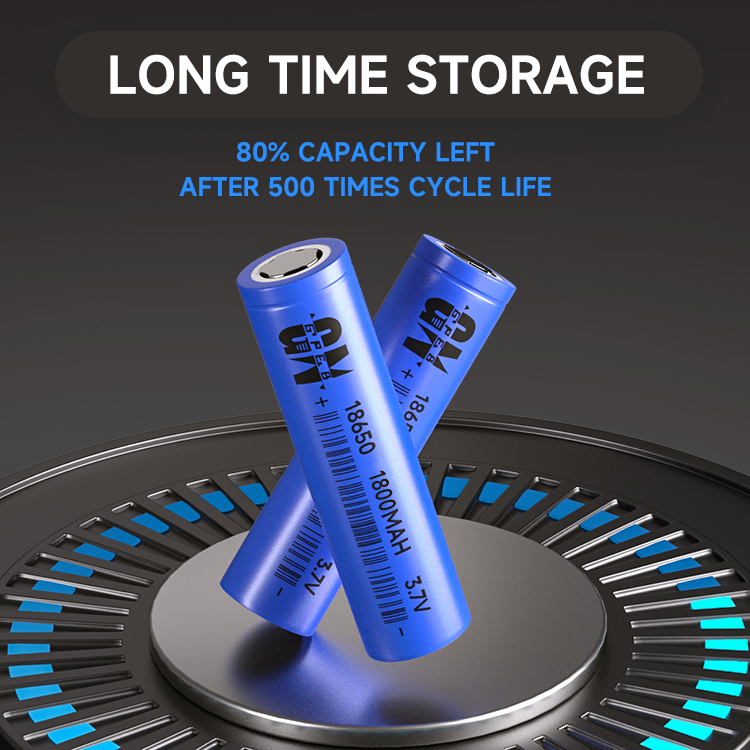
As portable devices have become more and more popular, many of these
products are powered by lithium-ion batteries. Because lithium-ion batteries
have different characteristics from other rechargeable batteries and are not
protective, they usually have a circuit board inside the battery. This article
will describe the characteristics of lithium-ion batteries and the working
principle of the protective circuit.
Lithium batteries are divided into primary batteries and secondary
batteries. At present, non-rechargeable primary lithium batteries are mainly
used in some portable electronic products with low power consumption, while
rechargeable secondary batteries, namely lithium-ion batteries, are used in
notebook computers, mobile phones, PDAs, digital cameras and other electronic
products with high power consumption.
Due to the chemical characteristics of lithium-ion batteries, during normal
use, there is a chemical positive reaction between electric energy and chemical
energy. However, under certain conditions, such as overcharging,
over-discharging and over-current, the chemical side reaction will occur inside
the battery. When the side reaction is intensified, it will seriously affect the
performance and service life of the battery, and may produce a large amount of
gas, The internal pressure of the battery increases rapidly and then explodes,
resulting in safety problems. Therefore, all lithium-ion batteries need a
protective circuit to effectively monitor the charging and discharging status of
the battery, and under certain conditions, turn off the charging and discharging
circuit to prevent damage to the battery.
1. Normal state
In the normal state, the "CO" (pin 3) and "DO" (pin 1) pins of IC1 in the
circuit output high voltage, and both MOSFETs are in the conduction state. The
battery can be charged and discharged freely, because
The on-resistance of MOSFET is very small, usually less than 30 milliohm,
so its on-resistance has little impact on the circuit performance.
The current consumption of the protection circuit in this state is μ Class
A, usually less than 5 μ A。
2. Overcharge protection
The charging mode required for lithium-ion batteries is constant
current/constant voltage. At the initial stage of charging, it is constant
current charging. With the charging process, the voltage will rise to 4.2V
(according to the different cathode materials, some batteries require a constant
voltage value of 4.1V), and change to constant voltage charging until the
current is getting smaller and smaller.
When the battery is being charged, if the charger circuit is out of
control, the battery voltage will continue to be charged with constant current
after exceeding 4.2V. At this time, the battery voltage will continue to rise.
When the battery voltage is charged to more than 4.3V, the chemical side
reaction of the battery will intensify, which will lead to battery damage or
safety problems.
In the battery with protection circuit, when the control IC detects that
the battery voltage reaches 4.28V (the value is determined by the control IC,
and different ICs have different values), its "CO" pin will change from high
voltage to zero voltage, so that V2 will turn from on to off, thus cutting off
the charging circuit, making the charger unable to charge the battery, and
playing the role of overcharging protection. At this time, due to the existence
of the body diode VD2 of V2, the battery can discharge the external load through
the diode.
There is still a delay time between the time when the control IC detects
that the battery voltage exceeds 4.28V and the time when it sends the turn-off
V2 signal. We call it the overcharge protection delay time. The time is
determined by the internal or external delay capacitance of the IC, which is
usually set to about 1 second, to avoid misjudgment due to interference.
3. Overdischarge protection
During the discharge of the battery to the external load, its voltage will
gradually decrease with the discharge process. When the battery voltage drops to
2.5V, its capacity has been fully discharged. At this time, if the battery
continues to discharge the load, it will cause permanent damage to the
battery.
In the process of battery discharge, when the control IC detects that the
battery voltage is lower than 2.3V (the value is determined by the control IC,
and different ICs have different values), its "DO" pin will change from high
voltage to zero voltage, so that V1 will turn from on to off, thus cutting off
the discharge circuit, making the battery unable to discharge the load again,
and playing the role of over-discharge protection. At this time, the charger can
charge the battery through the body diode VD1 of V1.
Since the battery voltage cannot be reduced under the over-discharge
protection state, the current consumption of the protection circuit is required
to be very small. At this time, the control IC will enter the low power
consumption state, and the power consumption of the entire protection circuit
will be less than 0.1 μ A。
There is also a delay time between the time when the control IC detects
that the battery voltage is lower than 2.3V and the time when the control IC
sends off the V1 signal. The length of the delay time is determined by the IC or
the external delay capacitor, which is usually set to about 100ms, to avoid
misjudgment due to interference.
Read recommendations:
602535 500MAH 3.7V
What if you replace it with a circular battery?household energy storage battery manufacture
Policy Support for Polymer Batteries
26650 battery wholesale
18650 3500mah battery












































 360° FACTORY VR TOUR
360° FACTORY VR TOUR
 Whatsapp
Whatsapp
 Tel
Tel Email
Email TOP
TOP